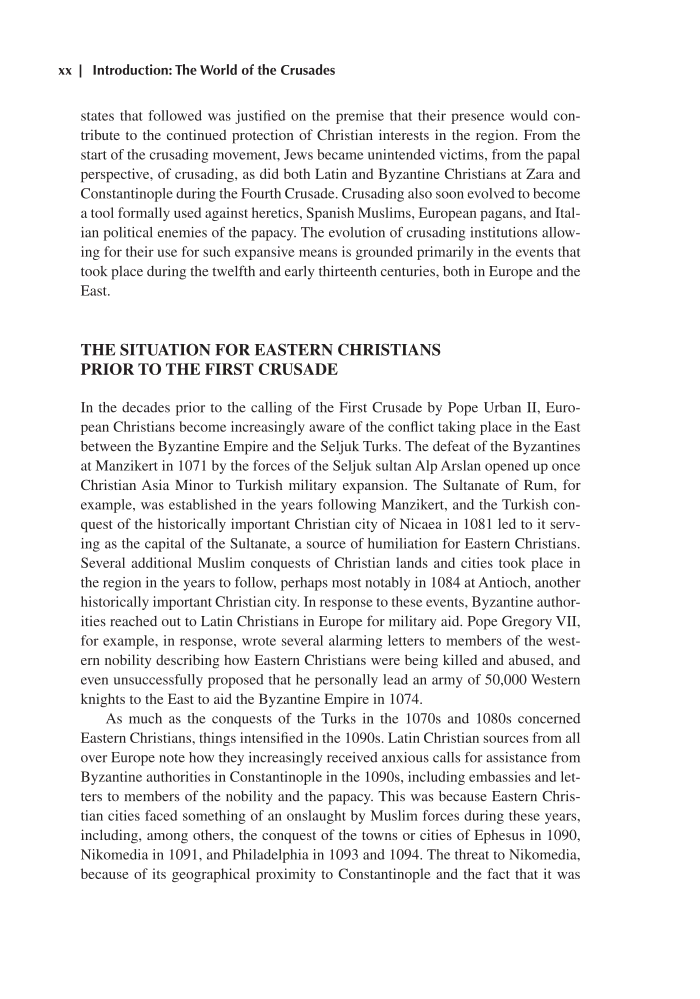xx Introduction: The World of the Crusades states that followed was justified on the premise that their presence would con- tribute to the continued protection of Christian interests in the region. From the start of the crusading movement, Jews became unintended victims, from the papal perspective, of crusading, as did both Latin and Byzantine Christians at Zara and Constantinople during the Fourth Crusade. Crusading also soon evolved to become a tool formally used against heretics, Spanish Muslims, European pagans, and Ital- ian political enemies of the papacy. The evolution of crusading institutions allow- ing for their use for such expansive means is grounded primarily in the events that took place during the twelfth and early thirteenth centuries, both in Europe and the East. THE SITUATION FOR EASTERN CHRISTIANS PRIOR TO THE FIRST CRUSADE In the decades prior to the calling of the First Crusade by Pope Urban II, Euro- pean Christians become increasingly aware of the conflict taking place in the East between the Byzantine Empire and the Seljuk Turks. The defeat of the Byzantines at Manzikert in 1071 by the forces of the Seljuk sultan Alp Arslan opened up once Christian Asia Minor to Turkish military expansion. The Sultanate of Rum, for example, was established in the years following Manzikert, and the Turkish con- quest of the historically important Christian city of Nicaea in 1081 led to it serv- ing as the capital of the Sultanate, a source of humiliation for Eastern Christians. Several additional Muslim conquests of Christian lands and cities took place in the region in the years to follow, perhaps most notably in 1084 at Antioch, another historically important Christian city. In response to these events, Byzantine author- ities reached out to Latin Christians in Europe for military aid. Pope Gregory VII, for example, in response, wrote several alarming letters to members of the west- ern nobility describing how Eastern Christians were being killed and abused, and even unsuccessfully proposed that he personally lead an army of 50,000 Western knights to the East to aid the Byzantine Empire in 1074. As much as the conquests of the Turks in the 1070s and 1080s concerned Eastern Christians, things intensified in the 1090s. Latin Christian sources from all over Europe note how they increasingly received anxious calls for assistance from Byzantine authorities in Constantinople in the 1090s, including embassies and let- ters to members of the nobility and the papacy. This was because Eastern Chris- tian cities faced something of an onslaught by Muslim forces during these years, including, among others, the conquest of the towns or cities of Ephesus in 1090, Nikomedia in 1091, and Philadelphia in 1093 and 1094. The threat to Nikomedia, because of its geographical proximity to Constantinople and the fact that it was
Document Details My Account Print multiple pages
Print
You have printed 0 times in the last 24 hours.
Your print count will reset on at .
You may print 0 more time(s) before then.
You may print a maximum of 0 pages at a time.






















































































































































































































































































































































































































































































































































































































































































































































































































































































































